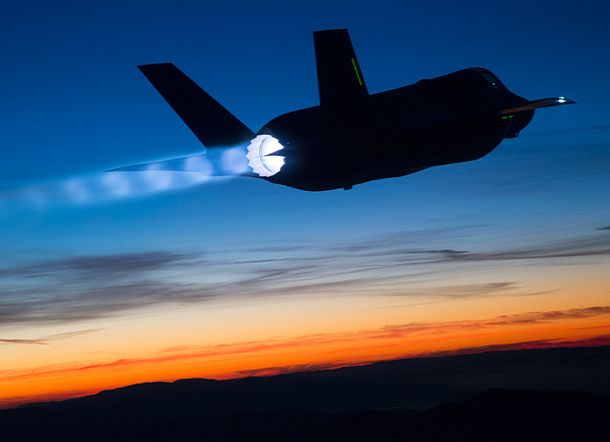Katherine Ziesing | Canberra
I would say one of the most important things in my job is asking the right question at the right time. But it can be hard to know what to ask when. And the Rumfeldian issue of unknown unknowns tends to rear its head at this point; you don’t know what you don’t know. But sometimes you get a feeling that you’re missing something, something important. Asking the right question at the right time can allay those feelings, that niggle that all is not well.
I get this feeling with the latest Senate inquiry into the JSF program. I have no issue with government looking into a multi-billion program that has been running since 2002 and has yet to deliver anything on the ground in Australia, so to speak. The taxpayer deserves to know what the national treasure is being invested in and that value for money and the national interest are being served.
But what I do question is, why? Why now? This would have to be one of the most reviewed and examined programs in recent history. There are entire US government bodies dedicated to making sure that everything is on track. The numerous and regular reports from the US Government Accountability Office (GAO), Selected Acquisition Reports (SAR), Cost Analysis and Program Evaluation office (CAPE) and then information from the prime contractor, Lockheed Martin, are all in the public domain.
In fact, I would suggest that there is so much information on the topic that unless you live and breathe the program, it can be hard to work out a single point of truth. Sifting through the facts and figures from different sources and fusing them into a coherent whole is daunting.
My biggest bugbear on this front is dollars. What year dollars? What are you including when you say a platform costs this much? Does that include weapons, sustainment, training, simulators, and facilities? The total program cost in Australia is $16 billion but what does that include and over how long? Have exchange rate fluctuations and inflation been factored in? This is an issue that concerns many observers as various bodies use different calculations for their dollars. As much as I loathe officials not being able to give me a firm price on what a CTOL F-35A will cost Australia, I can sympathise with their reticence to name a firm figure for all those reasons.

The ‘too big to fail’ moniker has been attached to the program for some time now. With the total program estimated at 3,500 platforms across the three variants, there might be some truth to that approach. The sunk costs alone that the US faces are significant. It would take an incredibly brave political decision to cancel the program that is replacing aircraft for every US service, eight partner nations (Australia, Canada [still pending at this moment], Denmark, Italy, the Netherlands, Norway, Turkey, the UK) and three FMS customers (Israel, Japan and the Republic of Korea). The diplomatic fallout would be awkward to say the least.
And Australian industry has secured over US$533 million worth of work on the program, work that was globally competed for best practice and value for money. Australian SMEs in particular have done exceedingly well on this front. Many have found other work in both Defence and adjacent industries, thanks to the upskilling that JSF work has provided. There are companies in the mix that have attained local and global success thanks to this program alone. This figure is set to increase as the program ramps up in the coming years.
"Will we get what we paid for when the final Australian configuration arrives?"
The program has been far from perfect in many ways over the years. The concurrent production and testing approach has its flaws. The insertion of new technology in the form of composite materials has had issues. A new developmental engine, also with new materials, has suffered setbacks along the way. The millions of lines of code that will make the JSF a formidable digital capability have been a point of failure but also have seen remediation efforts as successive blocks are coded, tested and implemented. Engineers are constantly asking how and why and finding the answers along the way.
I don’t think JSF officials promised an easy road for the program at any time. But they did promise a world class 5th generation fighter would be delivered.
I think the right question at this time would be: will we get what we paid for when the final Australian configuration arrives? Will our expectations have been met? If we were faced with the same choice now, knowing what we do now, would we make the same decision? I think the answer would still be 100 JSF for the Royal Australian Air Force over the life of the program.
This article first appeared in the ADM February 2016 issue.




